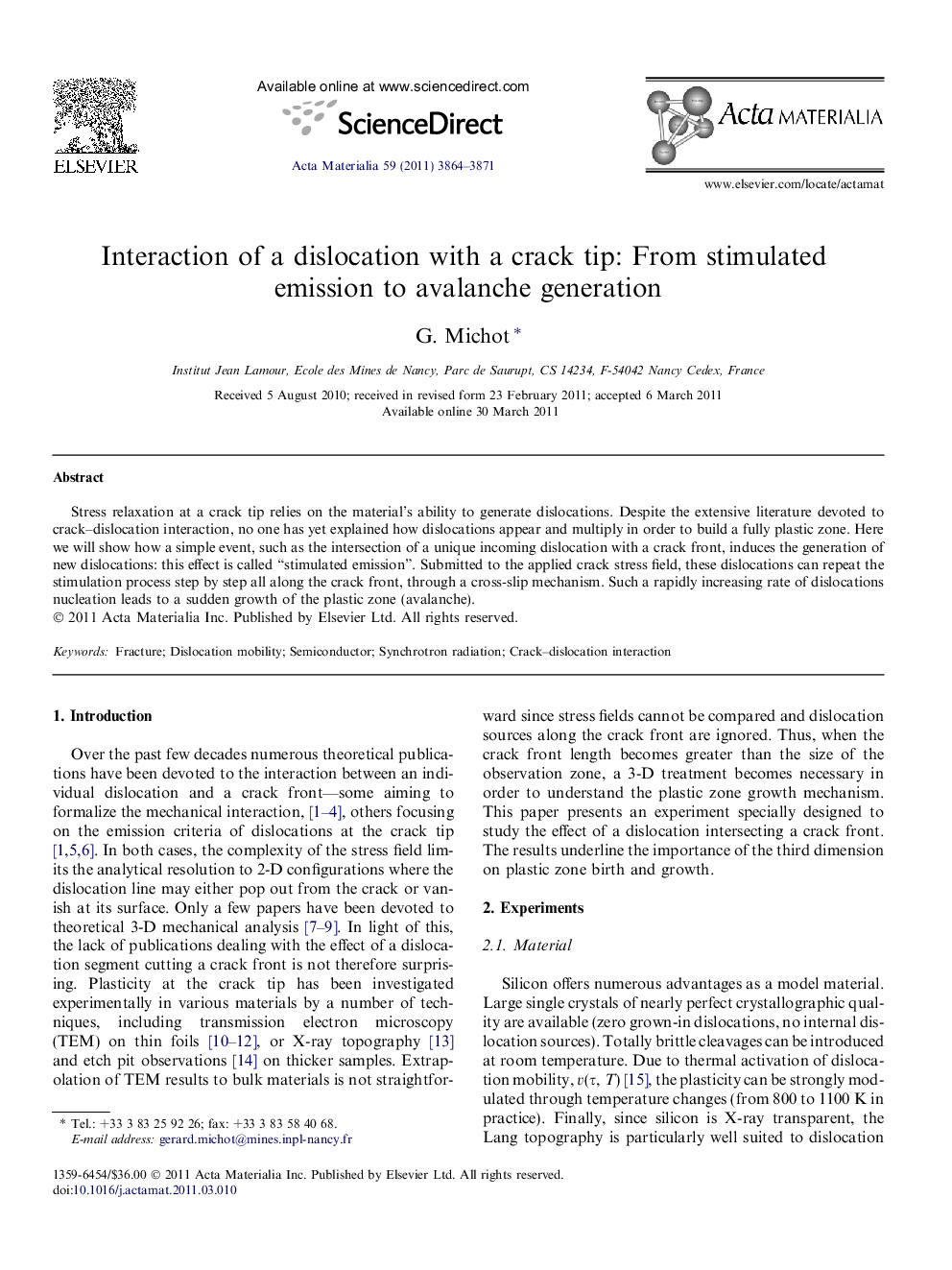| Article ID | Journal | Published Year | Pages | File Type |
|---|---|---|---|---|
| 1447414 | Acta Materialia | 2011 | 8 Pages |
Stress relaxation at a crack tip relies on the material’s ability to generate dislocations. Despite the extensive literature devoted to crack–dislocation interaction, no one has yet explained how dislocations appear and multiply in order to build a fully plastic zone. Here we will show how a simple event, such as the intersection of a unique incoming dislocation with a crack front, induces the generation of new dislocations: this effect is called “stimulated emission”. Submitted to the applied crack stress field, these dislocations can repeat the stimulation process step by step all along the crack front, through a cross-slip mechanism. Such a rapidly increasing rate of dislocations nucleation leads to a sudden growth of the plastic zone (avalanche).
